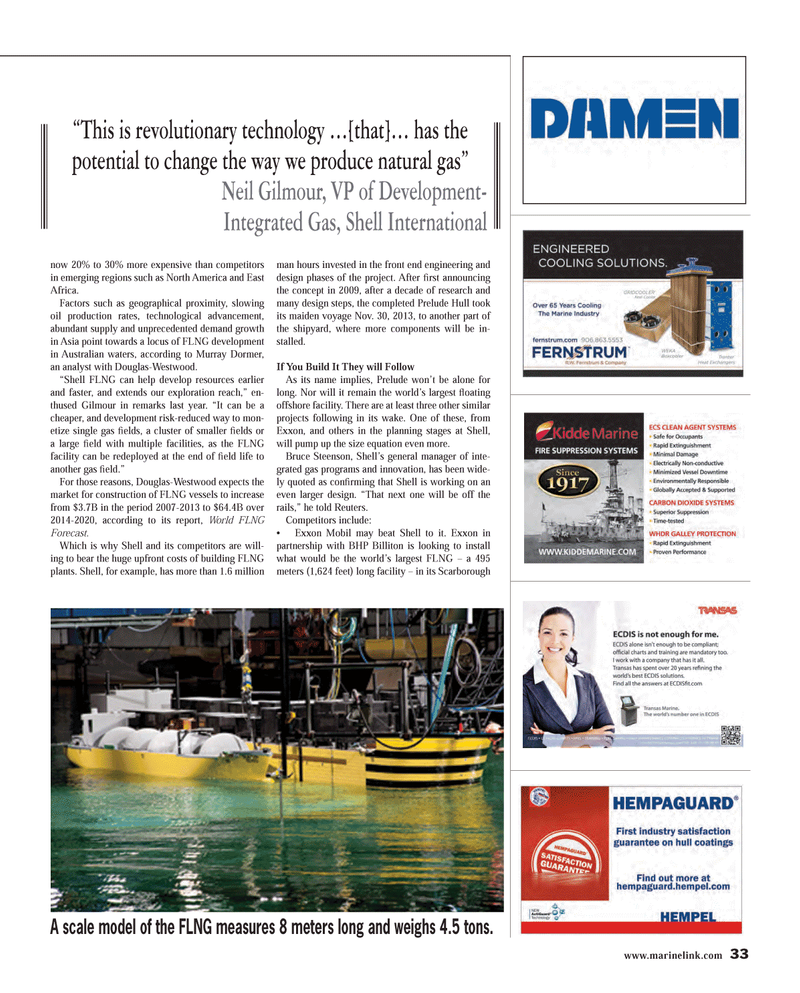
Page 33: of Maritime Reporter Magazine (July 2014)
Offshore Energy Structures & Systems
Read this page in Pdf, Flash or Html5 edition of July 2014 Maritime Reporter Magazine
www.marinelink.com 33 now 20% to 30% more expensive than competitors in emerging regions such as North America and East
Africa.
Factors such as geographical proximity, slowing oil production rates, technological advancement, abundant supply and unprecedented demand growth in Asia point towards a locus of FLNG development in Australian waters, according to Murray Dormer, an analyst with Douglas-Westwood. “Shell FLNG can help develop resources earlier and faster, and extends our exploration reach,” en- thused Gilmour in remarks last year. “It can be a cheaper, and development risk-reduced way to mon- etize single gas fi elds, a cluster of smaller fi elds or a large fi eld with multiple facilities, as the FLNG facility can be redeployed at the end of fi eld life to another gas fi eld.”
For those reasons, Douglas-Westwood expects the market for construction of FLNG vessels to increase from $3.7B in the period 2007-2013 to $64.4B over 2014-2020, according to its report, World FLNG
Forecast.
Which is why Shell and its competitors are will- ing to bear the huge upfront costs of building FLNG plants. Shell, for example, has more than 1.6 million man hours invested in the front end engineering and design phases of the project. After fi rst announcing the concept in 2009, after a decade of research and many design steps, the completed Prelude Hull took its maiden voyage Nov. 30, 2013, to another part of the shipyard, where more components will be in- stalled.
If You Build It They will Follow
As its name implies, Prelude won’t be alone for long. Nor will it remain the world’s largest fl oating offshore facility. There are at least three other similar projects following in its wake. One of these, from
Exxon, and others in the planning stages at Shell, will pump up the size equation even more.
Bruce Steenson, Shell’s general manager of inte- grated gas programs and innovation, has been wide- ly quoted as confi rming that Shell is working on an even larger design. “That next one will be off the rails,” he told Reuters.
Competitors include: • Exxon Mobil may beat Shell to it. Exxon in partnership with BHP Billiton is looking to install what would be the world’s largest FLNG – a 495 meters (1,624 feet) long facility – in its Scarborough “This is revolutionary technology …[that]… has the potential to change the way we produce natural gas”
Neil Gilmour, VP of Development-
Integrated Gas, Shell International
A scale model of the FLNG measures 8 meters long and weighs 4.5 tons.
MR #7 (32-41).indd 33 7/1/2014 10:59:19 AM

 32
32

 34
34
